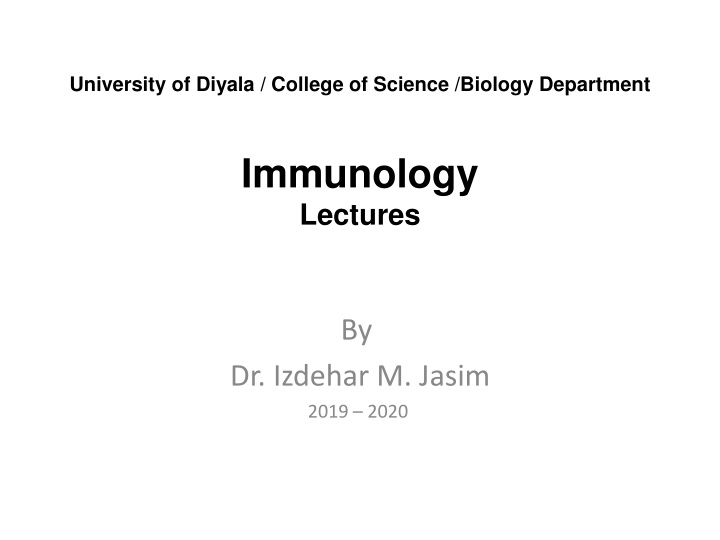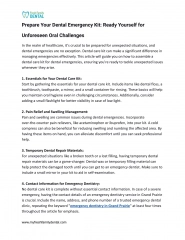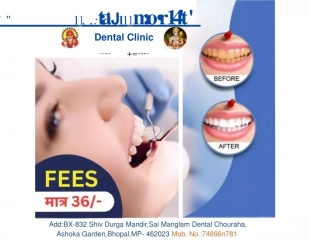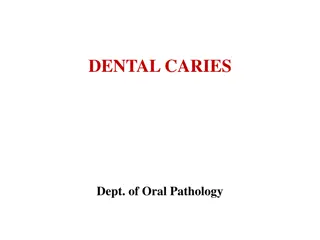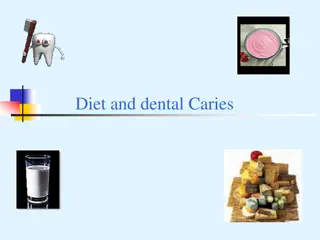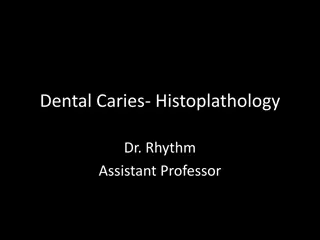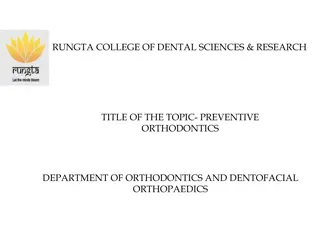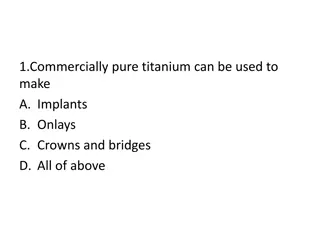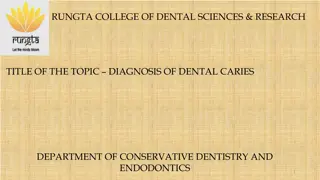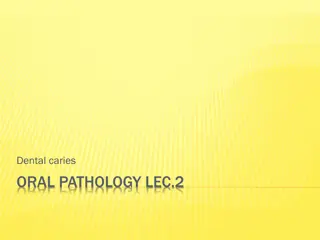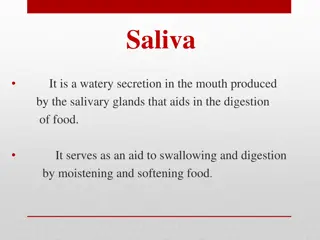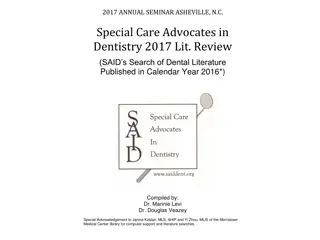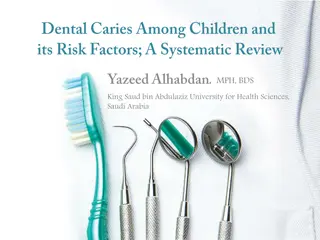Saliva and Dental Caries: Function and Importance
Saliva is a vital glandular secretion that plays a crucial role in maintaining oral health. Learn about the types of salivary glands, saliva composition, and its functions including lubrication, digestion, ion reservoir, taste facilitation, clearance, and maintenance of healthy oral tissues. Understand how saliva helps neutralize plaque pH, enhances caries resistance, and contributes to overall oral hygiene.
Download Presentation

Please find below an Image/Link to download the presentation.
The content on the website is provided AS IS for your information and personal use only. It may not be sold, licensed, or shared on other websites without obtaining consent from the author.If you encounter any issues during the download, it is possible that the publisher has removed the file from their server.
You are allowed to download the files provided on this website for personal or commercial use, subject to the condition that they are used lawfully. All files are the property of their respective owners.
The content on the website is provided AS IS for your information and personal use only. It may not be sold, licensed, or shared on other websites without obtaining consent from the author.
E N D
Presentation Transcript
University of Diyala / College of Science /Biology Department Immunology Lectures By Dr. Izdehar M. Jasim 2019 2020
Tolerance and autoimmunity
Tolerance Tolerance refers to the specific immunological non-reactivity to an antigen resulting from a previous exposure to the same antigen. While the most important form of tolerance is non- reactivity to self-antigens, it is possible to induce tolerance to non-self-antigens. When an antigen induces tolerance, it is termed tolerogen.
* It is a specific immunologic unresponsiveness i.e. the absence of specific immunoresponses to a particular antigen in a fully immunocomptent person * Unresponsiveness to self antigens is known as auto tolerance * Both B-cells and T-cells participate in tolerence * But T-cells play the primary role
Tolerance to self-antigens We normally do not mount a strong immune response against our own (self) antigens, a phenomenon called self-tolerance. When the immune system recognizes a self-antigen and mounts a strong response against it, autoimmune disease develops. Nonetheless, the immune system has to recognize self-MHC to mount a response against a foreign antigen. Thus, the immune system is constantly challenged to discriminate self vs non-self and mediate the right response.
Induction of tolerance to non-self Tolerance can also be induced to non-self (foreign) antigens by modifying the antigen, by injecting the antigen through specific routes such as oral, administering the antigen when the immune system is developing, etc. Certain bacteria and viruses have devised clever ways to induce tolerance so that the host does not kill these microbes. Ex: Patients with lepromatous type of leprosy do not mount an immune response against Mycobacterium leprae.
Central Tolerance Clonal deletion: * The process by which T-cells acquire the ability to distinguish self from non self, in fetal thymus * This involves the killing of T-cells that react against antigens present in the fetus at that time
Peripheral Tolerance T-cell tolerance (clonal anergy): a lack of reaction by the body's defense mechanisms to foreign substances, and consists of a direct induction of peripheral lymphocyte tolerance * Some self-reactive T cells are not killed in thymus * Functional inactivation of surviving selfreactive T cells
Tolerance * mechanisms: 1) Clonal deletion Probably while B-cell precursors are in bon marrow 2) Clonal anergy B cells in the periphery * Tolerance in B-cells is less complete than in T-cells * The most autoimmune diseases are mediated by antibodies B-cells become tolerant to self by two
Anti-idiotype antibody These are antibodies that are produced against the specific idiotypes of other antibodies. Anti-idiotypic antibodies are produced tolerization and have been demonstrated in tolerant animals. These antibodies may prevent the B cell receptor from interacting with the antigen during the process of
Factors Influencing The Induction Tolerance 1) Immunologic maturity of the host: Neonates are immunologically immature and well accept allograft that would be rejected by mature host 2) Structure and dose of antigen: a- Simple molecules induce tolerance more readily than complex ones b- Very high and very low doses of antigen may result in tolerance. 3) T-cells become tolerant more readily and remain tolerant longer than B-cells 4) The continuous presence of antigen helps to maintain tolerance 5) Administration of immunosuppressive drugs enhances tolerance as in transplantation
Clinical Importance of Tolerance 1) Organ transplantation: Introduction of tolerance may help in prevention of rejection 2) Tumor development: Tolerance to tumor antigen results in growth of the tumor without being detected by the immune mechanisms 3) Autoimmune disorders: Disturbance of self-tolerance results in autoimmune disease
Autoimmune Diseases * breakdown of the mechanisms that maintain auto tolerance * Auto-antibodies and self reactive T-cells are produced, resulting in tissue damage by several mechanisms Autoimmune diseases occur due to
Etiology Of Autoimmune Diseases 1) Genetic predisposition: - Familial incidence of autoimmune diseases - Most of them appear to be associated with certain MHC genes, specially MHC II genes e.g. Rheumatoid arthritis is associated with DR4 Thyroditis with DR5 Multiple sclerosis with DR2 SLE with DR2/DR3 Type I diabetes with DR3/DR4 Ankylosing spondylitis with B27
2) Exposure to infectious antigens Molecular mimicry that cross react with self antigens - An immune response to these antigen will result in immune attack against self antigens e.g. Antibodies against M protein of Streptococcus pyogens may react with heart valves and cause Rheumatic fever 3) Alteration of self antigens or the appearance of new antigens under the effect of drugs, chemicals, or viral infections 4) Hormonal influences play a role e.g. SLE affects women 10 times more than men 5) Cryptic Antigen Ag sequestered from immune system Damage & release of antigen. (injury or surgery) e.g. Eye sympathetic ophthalmia Testes anti-sperm & orchitis Antibodies in blood can attack Myelin Basic Protein if Blood- Brain barrier is breached.
Mechanisms Of Disease Production * The disease may be organ specific e.g Hashimoto thyroditis * The disease may be systemic e.g. SLE or rheumatoid arthritis 1) Binding of an autoantibody to host cells result in complement fixation and tissue destruction e.g. Haemolytic anemia (Type II hypersensitivity)
2) Formation of immune complexes and their deposition in tissues, joints, kidney and skin The immune complexes resulting in tissue damage e.g. SLE and rheumatoid arthritis (Type III hyper.) 3) DTH reactions (Type IV)) due to auto reactive T-cells e.g. multiple sclerosis and type I diabetes fix complement Ulcerative colitis,
Immunodeficiency and autoimmunity There are a large number of immunodeficiency syndromes that present clinical and laboratory characteristics of autoimmunity. The decreased ability of the immune system to clear infections in these patients may be responsible for causing autoimmunity through perpetual immune system activation. One example is common variable immunodeficiency (CVID) autoimmune diseases are seen, e.g. inflammatory bowel disease, autoimmune thrombocytopenia and autoimmune thyroid disease. where multiple
Tumor immunology Malignant Transformation The regulated. However, such cells when exposed to chemical carcinogens, irradiation and certain viruses may undergo mutations transformation into cells uncontrolled growth, producing a tumor or neoplasm. proliferation of normal cells is carefully leading that to their are capable of
A tumor may be: Benign, if it is not capable of indefinite growth and the host survives. Malignant, if the tumor continues to grow indefinitely and spreads (metastasizes), eventually killing the host. This uncontrolled growth may be due to up regulation of oncogenes (cancer-inducing regulation of tumor suppressor genes (that normally inhibit tumor growth often by inducing cell death). genes) and/or down
EVIDENCE FOR IMMUNE REACTIVITY TO TUMORS There is a lot of evidence that tumors can elicit an immune response. Such evidence includes: Tumors that have severe mononuclear cell infiltration have a better prognosis than those that lack it. Certain tumors regress spontaneously neuroblastomas), suggesting an immunological response. Some tumor metastases regress after removal of primary tumor which reduces the tumor load, thereby inducing the immune system to kill the residual tumor. Although chemotherapy leads to rejection of a large number of tumor cells, the few tumor cells that evade the action of the drugs can outgrow and kill the host. However, the immune system may be able to mount an attack against the few tumor cells that are spared by the chemotherapeutic agent. (e.g., melanomas,
EVIDENCE FOR IMMUNE REACTIVITY TO TUMORS There is an increased incidence of malignancies in immuno- deficient patients such as AIDS patients who are susceptible to Kaposi sarcoma and transplant patients who are susceptible to Epstein Barr virus (EBV)-induced lymphoma. Tumor-specific antibodies and T lymphocytes (detected in cytotoxicity and proliferative response assays) have been observed in patients with tumors. The young and the old population have an increased incidence of tumors. These members of the population often have an immune system that is compromised. Hosts can be specifically immunized against various types of tumors demonstrating tumor antogens can elicit an immune response
Tumor associated antigens There are 2 main types of tumor antigens: Tumor-specific transplantation antigens (TSTA) which are unique to tumor cells and not expressed on normal responsible for rejection of the tumor. Tumor associated transplantation antigens (TATA) that are expressed by tumor cells and normal cells. cells. They are
Viruses that cause human tumors include: DNA viruses Papova (papilloma, polyoma) viruses: Papilloma virus causes cervical cancer. Hepatitis virus: Hepatitis B virus causes hepatocellular cancer. Adenoviruses may also be tumorigenic RNA viruses Retroviruses: Human T-lymphotropic viruses (HTLV-I and HTLV-II) causes T cell leukemias
Immunity against tumors Although there is ample evidence for anti-tumor immune reactivity in humans, evidence for immunity against malignancy comes mostly from experimental studies with animals. In these, mice were immunized by administering irradiated tumor cells or following removal of a primary tumor challenged with the same live tumor. These animals were found to be resistant to re-challenge with the same live tumor. While antibodies may develop against few cancers, cell-mediated immunity plays a critical role in tumor rejection. Thus, immunity can be transferred, in most cases, from an animal, in which a tumor has regressed, to a naive syngeneic recipient by administration of T lymphocytes. The T helper (Th) cells recognize the tumor antigens that may be shed from tumors and internalized, processed and presented in association with class II MHC on antigen presenting cells. These Th cells, when activated, will produce cytokines. Thus, the Th cells provide help to B cells in antibody production. Cytokines such as IFN-gamma may also activate macrophages to be tumoricidal. Furthermore, the Th cells also provide help to tumor-specific cytotoxic T cells (CTLs) by inducing their proliferation and differentiation. The CTLs recognize tumor antigens in the context of class I MHC and mediate tumor cell lysis. In tumors that exhibit decreased MHC antigens, natural killer (NK) cells are important in mediating tumor rejection.
Escape from immuno-surveillance According to the Immune Surveillance Theory, cancer cells that arise in the body are eliminated by the immune system. However, due to impaired immune reactivity, cancer cells may escape destruction. Tumors evade immune recognition by several mechanisms. 1-Tumors may not express neo-antigens that are immunogenic or theymay fail to express co-stimulatory molecules required for the activation of T cells. 2-In addition, certain tumors are known to lack or be poor expressers of MHC antigen. 3-Another reason for failure of immune surveillance may be the fact that in the early development of a tumor, 4-the amount of antigen may be too small to stimulate the immune system (low dose tolerance) or, due to the rapid proliferation of malignant cells (high dose tolerance), the immune system is quickly overwhelmed. 5-In addition, some tumors may evade the immune system by secreting immunosuppressive molecules and others may induce regulatory cells particularly the CD4+CD25+ FoxP3+ T regulatory cells. Also, 6-some tumors may shed their antigens which in turn may interact and block antibodies and T cells from reacting with the tumor cells.
IMMUNODEFICIENCY Immunodeficiency is the failure of the immune system to protect against disease or malignancy. Primary Immunodeficiency is caused by genetic or developmental defects in the immune system. These defects are present at birth but may show up later on in life. Secondary or acquired immunodeficiency is the loss of immune function as a result of exposure to disease agents, environmental factors, immunosuppression, or aging.
Immunodeficiencies-associated-with-aging These include a progressive decrease in thymic cortex, hypo-cellularity of and reduction in the size of thymus, a decrease in suppressor cell function and hence an increase in auto-reactivity, a decrease in CD4 cells functions. By contrast B cells functions may be somewhat elevated.
Immunodeficiencies- associated- with-malignancies- and- other- diseases. B cell deficiencies have been noted in multiple myeloma, Waldenstrom's macroglobulinemia, chronic lymphocytic leukemia and well differentiated lymphomas. Hodgkin's disease and advanced solid tumors are associated with impaired T-cell functions. Most chemotherapeutic agents used for treatment of immunosuppressive. Other conditions in which secondary immunodeficiencies occur are sickle cell anemia, diabetes mellitus, protein calorie malnutrition, burns, alcoholic cirrhosis, rheumatoid arthritis, renal malfunction, etc. Waldenstr m's macroglobulinemia (WM, also known as lymphoplasmacytic lymphoma) is cancer affecting B cells, a type of white blood cell. The main attributing antibody is immunoglobulin M (IgM) malignancies are also
Kinetics of antibody responses to T-dependent Antigen 1. Primary Antibody response:- a) Inductive, latent or lag phase - In this phase the antigen is recognized as foreign and the cells begin to proliferate and differentiate in response to the antigen. The duration of this phase will vary depending on the antigen but it is usually 5-7 days. b) Log or Exponential Phase - In this phase the antibody concentration increases exponentially as the B cells that were stimulated by the antigen differentiate into plasma cells which secrete antibody. c) Plateau or steady-state phase - In this phase antibody synthesis is balanced by antibody decay so that there in no net increase in antibody concentration. d) Decline or decay phase - In this phase the rate of antibody degradation exceeds that of antibody synthesis and the level of antibody falls. Eventually the level of antibody may reach base line levels.
2. Secondary, memory or anamnestic response :- a) Lag phase - In a secondary response there is a lag phase by it is normally shorter than that observed in a primary response. b) Log phase - The log phase in a secondary response is more rapid and higher antibody levels are achieved. c) Steady state phase d) Decline phase - The decline phase is not as rapid and antibody may persist for months, years or even a lifetime.
